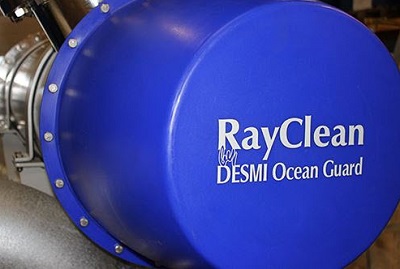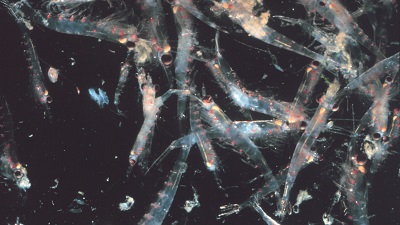DESMI to Appeal Coast Guard Decision
Ballast water treatment system manufacturer DESMI Ocean Guard has announced that it will appeal the U.S. Coast Guard’s preliminary decision to not accept the most probably number (MPN) method for type approval testing of ballast water treatment systems.
The news comes after last week’s announcement that Panama has begun the process of accession to the Ballast Water Management Convention. The process, expected to take two to three months, will definitely see the Convention enter into force internationally after 12 months.
Conflict Caused by the MPN Method
On December 14, 2015, the Coast Guard announced their preliminary decision to not accept the MPN method for the verification of the performance of ballast water treatment systems.
“The Coast Guard’s reason for rejecting the MPN method is, as we understand it, based on the notion that the MPN method does not measure if an organism is “living,” but rather if it is “viable,” which is not in accordance with the Coast Guard ballast water discharge standard, which the Coast Guard believes requires less than 10 living organisms per ml in discharged ballast water,” said DESMI in a statement.
 DESMI Ocean Guard, together with other manufacturers of UV based ballast water treatment systems, had in March 2015 submitted a Type Approval application to the Coast Guard, where the MPN method had been used to verify the system performance.
DESMI Ocean Guard, together with other manufacturers of UV based ballast water treatment systems, had in March 2015 submitted a Type Approval application to the Coast Guard, where the MPN method had been used to verify the system performance.
However, the Coast Guard has preliminarily determined that MPN conflicts with the Coast Guard rule. The Coast Guard reached this decision even though the Coast Guard rule itself uses and relies on MPN, and at no point does the Coast Guard even dispute the effectiveness of MPN or the DESMI Ocean Guard system, RayClean, says DESMI.
“We are, like many other BWTS providers and shipowners, surprised and disappointed with this preliminary decision, and after having carefully reviewed all available data and information together with our legal counsel, we have decided to file an appeal. We think that Coast Guard’s decision is not right for many reasons, and supported by important legal and scientific facts, we are convinced that the MPN method, which is accepted in the rest of the world, will also become accepted in the U.S. territory,” said the company in a statement.
A Website with the Facts
In an effort with support from worldwide experts from academia and industry, Coast Guard Independent Laboratory’s test facilities and leading manufacturers of UV based ballast water treatment systems, a website (www.mpnballastwaterfacts.com) containing important facts about the MPN method has been made available to the public. The website presents facts, reasons why the Coast Guard should accept the MPN method, expert opinions, and invites stakeholders to become involved and share their opinion with the Coast Guard.
The new website includes information that some may find surprising:
• The Coast Guard rule does not include the word “living” in the discharge standard applicable to U.S. waters.
• The Coast Guard rule does not define the word “living,” but in relevant governmental documents a living organism is defined as “an organism that has the ability to pass genetic material on to the next generation.” This is in accordance with generally accepted definitions of “living” worldwide.
• United States Federal Aquatic Nuisance Species Task Force – 2012, define invasive species as: “Invasive species are any species or other viable biological material (including its seeds, eggs, spores) that is transported into an ecosystem beyond its historic range, either intentionally or accidentally, and reproduces and spreads rapidly into new locations…”
• The Coast Guard Rule defines a ballast water management system as “any system which processes ballast water to kill, render harmless or remove organisms.”
 Therefore, says DESMI, the MPN method, which determines if an organism can reproduce, meets the Coast Guard Rule, because organisms that cannot reproduce are – per definition – not invasive species, and they are not – per definition – living organisms.
Therefore, says DESMI, the MPN method, which determines if an organism can reproduce, meets the Coast Guard Rule, because organisms that cannot reproduce are – per definition – not invasive species, and they are not – per definition – living organisms.
“Shipowners will have to use chemicals or much more UV power to treat ballast water, which leads to increased operating expenses, risk for increased corrosion and risk for chemical spills and explosions,” says DESMI. “The environment will be negatively impacted because Coast Guard’s decision will promote chemical based ballast water treatment, which will lead to a significant increase in discharges of disinfection by-products into the world’s oceans, which is of increasing concern to scientists and regulators.”
DNV Predicted Appeal
In December, DNV GL predicted that manufacturers would appeal the decision and the organization also stated that it envisaged a delay in when the Coast Guard will conclude on the first type approval of any ballast water management system as a result of its MPN decision.
The MPN method evaluates the ability of an organism to reproduce and hence its ability to colonize a new environment. As such, it does not provide a result equivalent to that of the Coast Guard’s preferred method - vital staining. DNV GL (with subcontracted laboratories) has provided much of the MPN analysis done for the UV system manufacturers.
DNV GL is of the position that the MPN method is the most relevant method and is a reliable way of evaluating the performance of UV technologies. That method has been validated to a greater extent than most of the methods described in the Environmental Technology Verification (ETV) Protocol (prescriptive guidance incorporated by reference to U.S. regulation), and UV technologies are commonly accepted in other water treatment industries.
Disinfecting water while ensuring acute kill of the organisms (instead of the ability to reproduce) will require a much more conservative dosage, implying higher power consumption (three to five times) by the UV lamps compared to most systems designed today, says DNV GL.
It may also imply more operational restrictions, such as minimum holding times (in a ballast tank) and UV transmittance (UV-T) limitation for the systems. UV-T is one of the key limiting factors that UV systems are tested for, indicating the ability to irradiate “murky” waters. Treatment in harbors with low UV-T will potentially require a reduction of the flow rate to increase the exposure time to the UV lamps and thus the dosage applied to the water.
Consequences for Shipowners

that matters most
Get the latest maritime news delivered to your inbox daily.
DNV GL says that some of the likely consequences of the decision are:
• The first ballast water management system to be type approved by the U.S. Coast Guard (tested by DNV GL) will probably be available in summer 2016. This will not be a UV system.
• Treatment systems using UV technology need to apply a more conservative treatment dose to immediately kill organisms under the current U.S. Coast Guard policy.
• Shipowners should consider possible operational limitations of UV-T, holding time, energy consumption and reduced flow rate when discharging ballast in U.S. waters with UV systems.
• UV systems might be equipped with a setting for U.S. Coast Guard mode and IMO mode.
